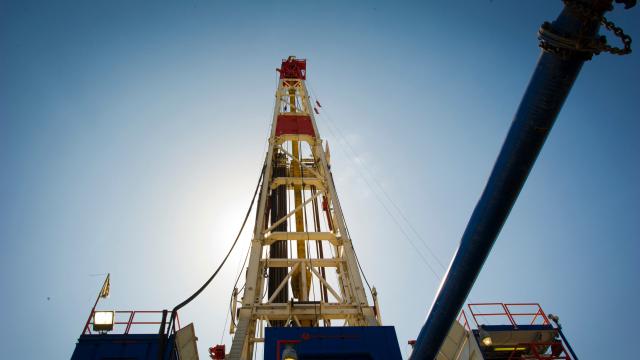Hydraulic fracturing has been a big topic of the upcoming presidential election. Biden has refused to ban it, Trump has said he’ll expand it hugely. Well, a new Harvard study suggests that the drilling practice is even more dangerous than we previously thought.
The new research, published in Nature Communications on Tuesday, shows that radiation levels up to 19 km downwind of drilling sites can be dangerously high. The Harvard scientists obtained data from 157 Cold War-era federal radiation monitoring stations across the U.S. between 2001 and 2017. They then compared those numbers with data on the position and production records of 120,000 fracking wells to examine the increase in the radioactivity levels of airborne particles in locations that had wells upwind.
The researchers found that sites that had 100 fracking wells within 19 km upwind, tended to have radiation levels about 7% above normal background levels. That alone “may cause adverse health outcomes in nearby communities,” the study says, but as the researchers note, some places in the Northeast are 19 km downwind of over 500 fracking sites. The highest radioactivity levels they observed were near the Marcellus and Utica shale fields in Pennsylvania and Ohio, where air particle radioactivity was 40% higher than normal background levels.
This level of radioactivity near fracking operations was higher than levels measured in areas near conventional drilling operations. Texas and New Mexico, for instance, registered lower readings than places near the fracking operations near the Northeast shale fields. That’s because conventional oil and gas drilling doesn’t disturb underground rocks very much, rocks that contain a uranium isotope that’s the source of their radioactivity. Fracking, on the other hand, involves blasting through shale and other rock formations, which releases the uranium. That uranium then breaks into particles, which then become attached to particles in the air and get carried downwind.
The study’s lead author, Petros Koutrakis, told Reuters that the levels of radioactivity his team observed “are not extremely dangerous, but could raise certain health risks to people living nearby.” The authors note that short-term exposure to particle radioactivity has been linked to adverse health outcomes like a decrease in lung function, higher blood pressure, and increased inflammation that can cause cardiovascular issues.
The study adds to previous research which shows that fracking can turn nearby water radioactive, leak carcinogenic pollutants into air and water and can even mess with testosterone levels. Fracking is also a massive source of planet-warming greenhouse gas emissions. So even if the airborne radioactivity levels it creates aren’t that dangerous, it seems better not to take a chance on fracking despite what each presidential candidate is promising.
